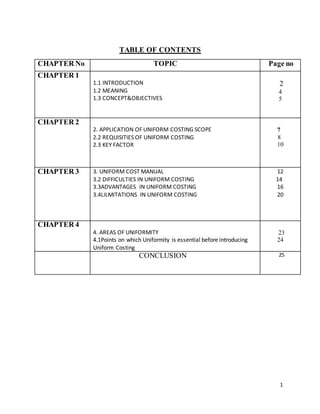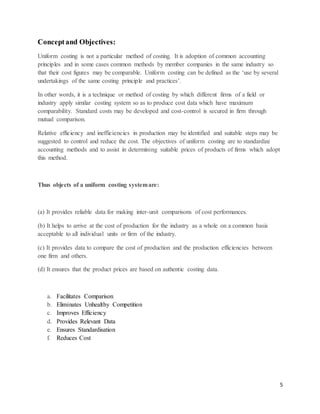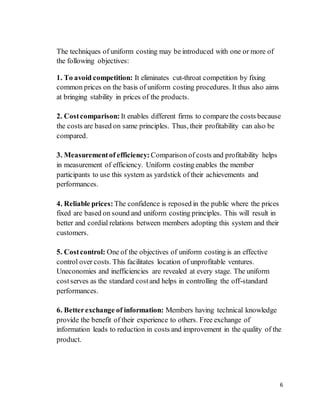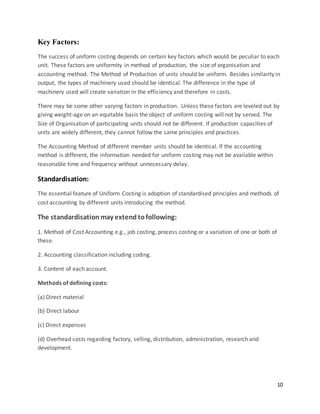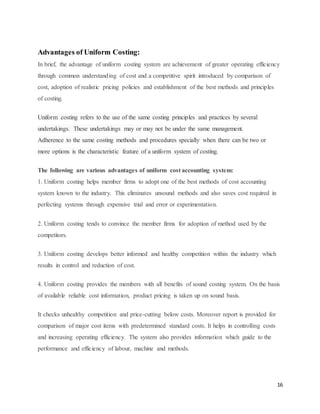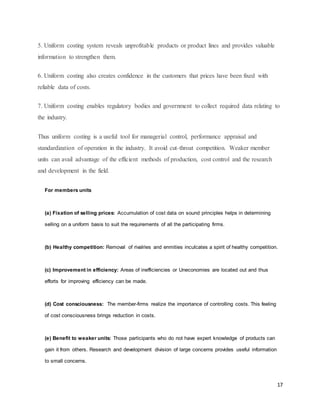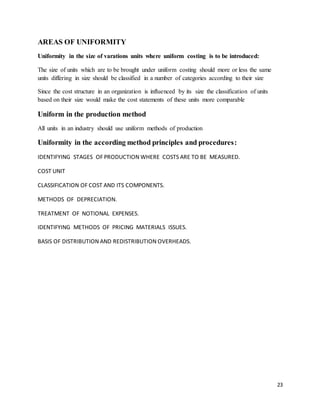Uniform costing aims to standardize costing principles and methods across companies in the same industry. There are several difficulties in implementing a uniform costing system, as cost structures may vary between companies due to differences in size, technology used, product ranges, efficiency levels, and managerial planning. However, uniform costing also provides advantages like facilitating cost comparisons, eliminating unhealthy competition, improving efficiency, providing relevant cost data, and ensuring standardization. For a uniform costing system to be successful, companies must cooperate by sharing accounting information and adopting common costing classifications, distribution methods, and reporting formats.
